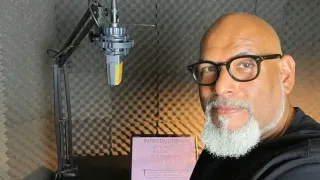April 12, 2015
A Whale is a Whale is a Whale
Kilian Melloy READ TIME: 3 MIN.
The greatest and most vulnerable. The mightiest and brightest. The furthest from and closest to us. Singer of songs, prey to homo sapiens , eater of Giant Squid, lighter of lamps, stiffener of ladies' corsets. Monster of measurement, behemoth of breath, blimp of blood. Herman Melville exhausted his poetic prose encompassing the human error, terror, technique, and mania unleashed in your pursuit during the mercenary massacres of the 19th century. Greenpeace activists risked their lives to stop your industrialized slaughter in the 20th. Oh, Whale! How far must I travel to contemplate your endangered awesomeness? Not far. California Academy of Sciences displays your relics through November, in Golden Gate Park.
The blue whale is the biggest animal that ever lived on Earth.
Cal Academy of Sciences is the 13th venue to host "Whales" in seven years of global migration from its breeding grounds at the Te Papa Tongarewa Museum in Wellington, New Zealand. Doors were widened, rails were modified during load-in. A team of 11 unpacked 140 crates full of bones, models, videos and Maori cultural treasures, then spent a month tucking this museum-within-a-museum into the mere 4,000 square feet of the Academy's temporary exhibit space on the second floor, up a narrow staircase. Installation staff were gifted with hand-carved taonga necklaces by Maoris who monitor the process to ensure proper respect is shown the bones of beings they revere as chiefs.
The 60-foot arching skeleton of a male Sperm Whale dominates half the space, accompanied by a relatively petite 45-foot female. They're called Sperm after the randy sailors' delusion that they rise to the surface to ejaculate, their heads full of spunk. On the contrary, they rise to expel water and take in oxygen, being mammals like us. And their heads are full of oil, some 3,000 liters, the precious commodity that drove the whale trade starting in 1800. The storied exploits of whalers are a mix of merchants, sailors, convicts, and indigenous peoples, the socio-politics of which this show touches on.
There are many angles to the tail of the whale, beginning some 50 million years ago when a wolf in Pakistan started eating fish, stayed underwater for longer and longer periods, and slowly adapted to the life aquatic until its tail grew flukes, its hands grew mittens, and its pelvis shrank to a vestige of its landlubber past. This miracle of mammalian evolution is shown through fossil replicas and a cool animation of morphing anatomy. For those raised on the "life came out of the sea" mantra, this alluring reverse trend for adventurous mammals must be seen to be believed. Creationists will flip.
Competing for the visitor's attention are the intricate shapes of whale skulls, full skeletons floating overhead, beautifully displayed Maori carvings, necklaces, weapons, and old salts' scrimshaw, succinct talking-head videos of fossil hunters and conservationists, longer videos specific to New Zealand and the Maori fight for cultural survival, a video game starring a dolphin, and a life-sized model of a Blue Whale's heart big enough for an adult to clamber inside and contemplate her puny existence. Reverent fun and mind-expanding detail inspire a cross-cultural and inter-species sense of wonder.
Impossible to take it all in, in a single visit. Academy admission is famously pricy, at $35. You can meticulously time your visit to semi-annual free days, according to your San Francisco zip code, or you can buy an annual membership, knowing your money funds actual scientific research and conservation efforts. Or, for $12, you can brave the scene on Thursday nights. Since you're not allowed to photograph the show, which significantly improves the quality of the experience, you might pick up the Te Papa's reference book "Whales and Dolphins of Aotearoa, New Zealand" (2014), richly illustrated, exhaustively informative.
Ever since Descartes, the dominant trend of Western mind pretends it can contemplate, from afar, what it calls Nature in a literal vacuum, preferably dead, dissected, and analyzed without emotion, as if emotion were an embarrassment to be disowned on the threshold of actual knowledge. As we witness, in horror, the accelerating extinction of creatures we assumed would always accompany us, people are increasingly blowing the whistle on our own species. Whether or not we're guilty of climate change, we are eradicating habitat crucial to other species' survival and ultimately our own. We do hunt whales, we do pollute the oceans and destroy their environment with sonar, and so forth.
In the words of Nan Hauser, founder and director of the Centre for Cetacean Research in Rarotonga, the largest of the Cook Islands, as seen in a brief video: "It's really important now we learn about whales. In order to counter the story of money and greed and power. Whales don't have a voice. We must speak for whales."
CAS hours: Mon.-Sat., 9:30 a.m.-5 p.m.; Sun., 11 a.m.-5 p.m.






